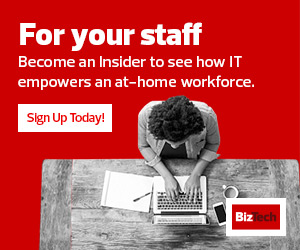1. Priorities for Businesses to Succeed in the Future of Work
With so many elements changing, it can be difficult for organizations to know where to start. In his keynote speech, Gelsinger laid out the top priorities businesses should focus on.
“In 2020, we’ve proved to ourselves that empathy plus urgency is a powerful combination,” he said. “Our mantra is simple: Care deeply and act decisively.”
For VMware, Gelsinger said that meant focusing on five things: app modernization, multicloud environments, digital workspace, virtual cloud networking and intrinsic security. And employees need to be at the heart of it all.
“It’s all about increasing employee engagement,” Gelsinger said. “At a time when remote is the new office, employee engagement is everything.”
MORE FROM BIZTECH: Read more about Gelsinger’s keynote address.
2. The Keys to a Future-Ready Workforce
When it comes to preparing operations for the future of work, there are three key areas of focus, according to VMware’s CTO for end-user computing, Shawn Bass: employee engagement, IT modernization and zero-trust security principles.
“We believe that employee engagement is correlated with business success,” Bass said. “And now, with the distributed workforce, technology plays an even bigger role in growing engagement.”
The nature of remote work also calls for a modernized IT infrastructure, Bass said.
“With customers supporting so many different devices in large numbers and with complex requirements, we know that unified endpoint management is just the start,” he added.
That large number of devices makes security more important than ever.
“Today, with a distributed workforce and a disappearing perimeter, organizations must make implementing a zero-trust approach their highest priority,” Bass said.













